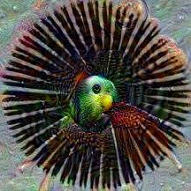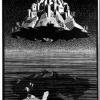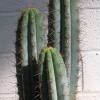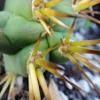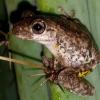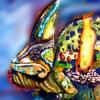Leaderboard
Popular Content
Showing content with the highest reputation on 21/12/12 in all areas
-
2 pointsAgain not real Bonsai but I love them, and havae a shit tonne I intend to keep in small pots. A crisum x A obesum. Didin't punch the colour in these photos either, they are a really sharp when they first open and slowly fade over a couple days. and give it another year and it will have a pretty cool shape its probably only 20cm tall at present.
-
2 pointsi think that straight kitty litter might dry out too fast in aus man. try it on something but i wouldn't go re-potting all your trees in it. i read on a loph blog that some kitty litters are good in their mix too. i'm trying one that is made from zeolite. it seems quite good. similar in apearence to lime. i've read that it holds heaps of water and nutes. heres some ligustrum ovalifolium / hedge privet i rescued from the council over winter. these things are perfect for bonsai. they're extremely hardy and vigorous and you can reduce the leaf size a shit load i find the 2nd one pretty ugly at this stage but will see how it looks with a few branches and some carving.
-
2 points
-
2 pointsBe sure to tie a dog to it and make the dog uproot it! Lest you fall prey to the scream of the mandrake...
-
1 pointWIth apologies to any fan of Backeberg. I thought two paragraphs from a review by Myron Kimnach were interesting and informative concerning the shades of trichocereus in the literature. His review of "Descriptiones Cactacearum Novarum" appeared in the 1957 Cactus & Succulent Journal (US) on page146. 'The work will probably always be regarded as a curiosity of botanical literature, for here the customary low quality of Backeberg's work sinks to a grotesque level. Indeed, it could well be used as a classroom example of what the conscientious taxonomist should avoid in his own work. In the first place he has employed questionable ethics in publishing a number of Rauh's collections which he knew had been collected earlier by Johnson, Ritter and Akers and which he also knew the latter were planning to publish. Secondly he seems to have described every minor variation so that for example we are confronted with some 20 new Haageocereus species from one river-valley in Peru! The descriptions are ridiculously short and he fails to mention how the new species differ from one another and from older species. The result is that practically none of his new taxa are established as being actually distinct. 'It can be imagined what the effect of these 200 newly published, but inadequately distinguished, species will be on the revision of Peruvian cacti now in progress by different workers. Their task has been difficult at best, due to the amateurish manner in which most of the older species were published. Now that confusion, for which Backeberg was also largely responsible, has been fantastically multiplied.'
-
1 pointHere's a couple different T. santaensis I have. The first is from Mesa Garden and the second from the Huntington Botanical. I don't know more about the provenance of either, but the Huntington one is spectacular...forget it, they both are. [Edit] Opps, I suppose this shouldn't be in the ID section. ~Michael~
-
1 pointHey all, Been flat out recently and haven't been on the forum for ages! My incubation room is overflowing at the moment and I've got to off load a ton of material. Didn't want to compost lots of the bags as most of them are ready to grow, so I thought I'd put it out there... If anyones keen I'll post them off for the price of shipping something like $10-12 gotta check the rates. I'll post them off when I get time (next month or so) See below and first in first served... King Oyster 1.5kg small fruiting bags I've got stacks of these! A number of larger KingOyster bags (some may be to heavy to ship cheaply) Shiitake bags ready to pop! 2-3 bags only One and only One! Grain Spawn bag of SRA strain 12 (this guy has a slight bacterial contam but it would go fine planting it outdoors in hardwood woodchips- note: strain 12 is second generation from the Starweed strain (I believe a wild strain collected up in the Byron Shire?) Post here and note what you want...The small bags are 1.5 kg and the big ones hopefully are under 3kg. 3kg Postage Satchel is something like $11/12 so thats what they'd go for. It will take me some time to organise so be patient and remember they're free OmSource
-
1 pointA few psychoactive plants of the vikings, of course there are more: The bog bilberry (Rauschbeere, Vaccinium uliginosum), which can sometimes be hallucinogenic because of a symbiotic fungus (Sclerotina megalospora), which is living on it sometimes. In mediaeval times in Scandinavia the berries were pressed with wine. In Siberia the shamans used the berries together with fly agaric mushrooms. In Austria, Tirol they say, kids would loose their mind when they eat from the bog bilberrys (Rauschbeeren). This picture was taken in northern Finland: The crowberry (Empetrum nigrum) is said to act intoxicating in higher doses. It is growing in Greenland too and one of their few wild edible fruits. In Norway (12. century) they made wine from the juice of the fruits.cating and hallucinogenic and Andromedotoxin could be responsible for this. This picture was taken in northern Norway: The Labrador tea (Ledum palustre) is an endangered plant in central-europe. It is also used by the inuit and can be smoked. While teas from it are only barely toxic, an alcoholic tincture can be quite toxic, because it is rich in essential oil. The Tungus people, from whose language the word shaman stems from, and the neighbouring Giljaks use mainly Ledum palustre as ritual and trance-inducing smoke. Also the japanese natives, the Ainu used it. In europe it was mainly used as a beer-additive. The picture was taken in northern Sweden (it is the one with the white flowers and narrow leaves): And the obligate fly agaric (Amanita muscaria)- it can only grow in symbiosis with birch or pine. The dried mushroom is much more comfortable and stronger in its hallucinogenic action, because of conversion of ibotenic acid into muscimol. On Kamtchatka the ritual-use of the fly agaric is still alive. It was also used by natives in the Americas (Algonkin, Ojibway and Dogrib in Northamerica, Maya, Aztecs and Purépecha in Centralamerica and Mochica in western Peru and can be found in Colombia too (on the mountains). The Tzeltales use it still today and smoke the dried skin. I found one in New Zealand near the coast. The picture was taken in Austria, Steiermark, Wechsel:
-
1 pointFor all the Aspie number watchers here, today's the last time in our lifetimes that we'll see day, month and year matching. And so far there's been no apocalypse! [Edit: ah, use Full editor...]
-
1 point
-
1 pointi've heard of people using coir to spacemonk never tried it all i ever do is sulphur the wounds let them callous then place ontop of coarse sand for a week or 2 with nothing then start spraying with a small amount of water usually every second day
-
1 pointhttp://www.shaman-australis.com/forum/index.php?showtopic=10596&hl=%2Bcaapi+%2Bmelbourne&fromsearch=1
-
1 pointWtf we're all still here. And to think I just spent all our money last night on gambling and prostitution. My wife is going to kill me! There might be some truth in it after all.
-
1 pointThe oceans are experiencing continued warming over the past few decades. This has been proven. For those who don't know, water holds much more heat per mass than soil or rock, and covers a much greater surface area of Earth than land area. So while deniers can claim that land temps aren't showing consistent rise across the globe, that is irrelevant to the fact that changing temperature of the oceans has a profound effect on climate all over the world. At least where I live, over the past 20 years we have experienced noticeably warmer / milder winters with significantly (statistically!) less frozen precipitation and warmer low temperatures. The trend has actually changed our climate from 5a published in older 1990 USDA hardiness maps to 6a in newer 2012 maps. Maps are based on the lowest recorded temps during the winter season in the area, indicating an overall change from an annual min temp of -20 to -15 F (zone 5) to -10 to -5 F. You can google a comparison between 1990 and 2012 USDA hardiness maps. Not saying that all locations and micro-climates are experiencing such a dramatic warming or even changing... but there are clearly documented and statistically significant changes in climate all over the world. Are we really to believe that some conspiratorial entity is falsely reporting the temperature of oceans, falsely reporting the quantity of frozen precipitation in winter months (that everyone can see with their own eyes and easily refute!) and falsifying recorded high and low air temps across the country... and to what end???
-
1 pointraketemensch, as far as I know the bog bilberry- fungus is not visible and not all plants are infected. I have also eaten a few of them and had no effect... the crowberry is a very far distributed plant, but only in the arctic, sub-arctic and sub-antarctic areas. I have found it all over Scandinavia, including Finnland, and even in the alps. here the distribution of the black crowberry (Empetrum nigrum): http://www.discoverl...Empetrum+nigrum The crowberry on the Falklands is Empetrum rubrum: http://www.discoverl...Empetrum+rubrum To my knowledge there is no connection between these populations because they don't grow in hot climates, maybe birds like the arctic tern, which travels between poles, once distributed it to South America, then it E. rubrum differentiated. For Henbane there are new evidences (a bag of henbane seeds in a grave of a Germanic priest) from Northern Germany (Fyrkat). As the Vikings liked beer, also henbane was growing in their area and they had contact to the Germans, the use as beer- additive seems not far away. The distribution of Hyoscyamus: http://www.discoverl...kind=Hyoscyamus Amanita: the theory of the berserkers by Ödmann, seems not to be correct, and there is no direct evidence on the use of FA by the vikings. Wasson mentions the finnish historian Itkonen, who wrote about the use by sorcerers of the Sami people in Inari. When I was in Lappland I heard the Sami had a custom of feeding fly agaric to their deer and collected the urine to drink. They thought their reindeer were flying to space through space, looking down on the world. As we know, the reindeers like to eat it, I think the question is how could the Sami (and also the Vikings?) NOT use this noticeable mushroom, when they saw their intoxicated animals? frank, I think the personal finding of Rätsch who made photos of it in Colombia is very plausible, how it came there is another question. You are right, that there is no real evidence for the pre-columbian use of it in the Americas but I think on the paleo-indians who came from Siberia, where the use of this conspicuous mushroom reaches far back. I also think on the far distribution of it; even accidentally brought to New Zealand. (with pine- plantings?) I agree with you that smoking seems not to be the usual way, how the mushroom was ingested by early european cultures as pipes were very unusual, the cretic opiumpipes were an exception. BUT: remember the scythian sweat tents, it was usual among early european and central asian tribes to put some herbs (and mushrooms?) in the fire to get the smoke, so although such a use is not very plausible, I would not exclude it. I've also smoked it and agree with the taste like barbecue chicken ;-)
-
1 pointCongrats mate! For less than $180 you have very few options, especially if you want to live close to uni. You can get a room in a share house around the inner-west for that price, but you may have to look around before you find one with a yard and decent housemates. I have friends that live around those parts, so their living situations may give you some idea as to pricing: * Opposite Sydney Uni in a split level two bedroom apartment with a small balcony - $500 * Four bedroom (closer to 3.5) house in Enmore, no yard (10 mins walk to Sydney Uni) - $900 * Small one bedroom apartment in Annandale with small balcony (10 mins walk to Sydney Uni) - $350 * Four person sharehouse in Marrickville with a small yard (Bit further away from the uni) - $150each Check gumtree if you haven't yet. Basically Sydney is ridiculously overpriced. EDIT: Oh and it's a landlord's market, and as a student you may have some troubles getting the place you want. The areas around Sydney Uni are desirable and there are a lot of cashed-up yuppies who are generally chosen before students. Some of my mates have had to compete with 10+ people for places and didn't receive them even after offering 3 months up front and/or higher rent. A few of these guys had limited/no rental history, but that should give you some idea of how competitive it can be. The affluent suburbs are mainly around East Sydney (Double Bay/Vaucluse/etc.), North Sydney (Neutral Bay/Mosman/Lane Cove/Hunters Hill/etc.) and further North (Wahroonga/Turramurra/Killara/etc.). There's also obviously other rich suburbs around Sydney, but the ones above are generally the ones that would be considered megarich wanker areas. Anyways, the times are changing now and there is money spreading all over Sydney. Basically anywhere aound the inner-west. Newtown/Enmore used to be more bohemian/alternative, but over the years the population of hipsters has increased significantly. Hipster activity is also fairly high in Glebe/Alexandria/Surry Hills/Paddington. The working class suburbs are generally around West-Sydney and SW-Sydney. Cronulla is actually more upper-middle class, it just has a lot of bogans. I used to go to the Cross a fair bit when I was younger, but now it has changed and I can't stand it (I'll admit I have changed a bit as well). Newtown or Oxford St are better places for going out in the city IMO. Darling Harbour is overpriced and mainly a suit sort of crowd. The Rocks is much the same, but has a few good restaurants. George St has nothing going for it. Getting out of the city and going to a nice doof > all of the above options . Anyways, good luck mate. There are a fair few members around these parts who can help you out if you need anything else. p.s. RE the plants: I can't help with growing as I don't know enough about the climate in Victoria, but I would say it's pretty similar. And I'm not aware of any differences in terms of the law.
-
1 pointUpdate Almost a month in and this is how its going. I gifted 4 of the the biggest A. maidenii and A. obtusifolia at the newcastle meet so this is whats left over. A. maidenii A. obtusifolia The A. obtusifolia arent growing as fast and are showing yellow and red on the leaves, any thoughts ? Ive also started sprouting a few A. acuminata but they are really struggling, tall and thin with only 2 or 4 petals on the leaves, then they cant support their weight and topple over. Ill try another batch with some new seed i received soon. Thanks again to the seed donor... you know who you are.... champion
-
1 pointwat, these havn't sold yet? These plants will be quality and grown with love coming from Oxy. I'f I didn't have so many spikey ones already, I'd be jumping on it. Peace Naja
-
1 pointWelI, I spent the week end on the end of a grinder removing the chicken house and run to of course create more cacti garden. This is stage two, I think three more cacti beds to come!! Planted our Peru- (HB01), Cuzco, Knuthianus, Spach, Pach, J1 open, LC002, SS02 x Bridge, TBM, Sausage and a couple of mongrels. The old wood stove was in the chicken house so decided to use it as a platform for my seedlings which will become stage 3-5 when they are big enough to go into the ground.
-
1 pointThat's cool! Did you give him 12 clocks which were all set to 12 o'clock? Actually, that would've been overly symbolic. Sometimes symbolism gives me a headache
-
1 point
-
1 pointHi Guys, i see why people put knuthianus under cuzcoensis. In fact, they are related to each other and Friedrich Ritter whom i consider one of the greatest field experts ever lived said that Knuthianus is probably a variety of cuzcoensis. There is no doubt about this and i totally agree. But there are differences that justify keeping the name in this community. It makes it possible to trace back very old descriptions in the future. If we get rid of the older callnames, it wont be possible to say what people where looking at when they wrote their cactus books in the 50s or 60s. Taxonomically, the name probably wouldnt stand though. But the moment you merge Knuthianus into cuzcoensis using modern taxonomy, you´ll have to merge Cuzcoensis into Peruvianus as well. A very old Knuthianus gets a very round, treelike log. A typical cuzcoensis is said not to get such a round log. Flowers of knuthianus will probably be the same as Cuzcoensis. I am personally pretty sure that both are knuthianus type as it has a very distinct rib shape and spine arrangement, including less pronounced dots on the spine base but i am also very comfortable with them or one of them being called cuzcoensis. Because thats what they taxonomically are. The differences that Ritter described dont justify a new species. He really liked naming new species. ;) bye Eg
-
1 pointIf germination is good this winter, I may have a few European mandrakes up for sale in the spring. They are bastards of things to germinate....
-
1 pointhttp://www.allrareherbs.com.au this what you were after? SAB store does (did) have those items from time to time too though i think edit: both those items are in stock currently at all rare herbs, so you are in luck
-
1 point

